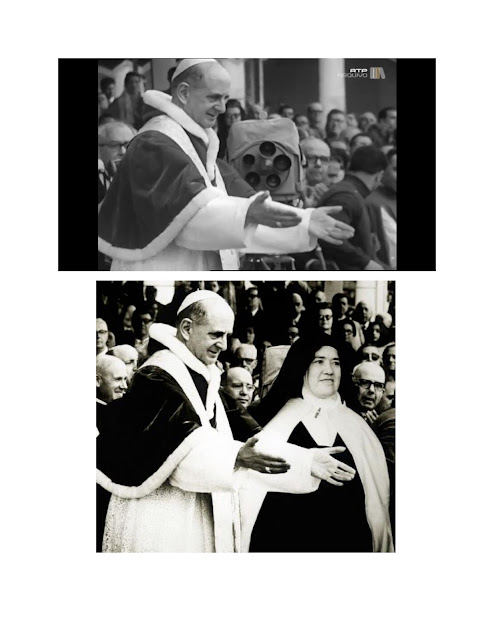The next parts of the book, pp. 40 -43 are simply very generic descriptions of an almost ideal Catholic life of Portuguese families during the early years of the 20th century. Nothing specific. For the simple reason that she does not know the specifics! She is relying on third hand accounts. For example, "Everyone fulfilled the precept of keeping holy the Sundays and the other Holidays of Obligation. In the morning, everyone went to Mass."(p. 43).
As someone who deals daily with sheep, I can tell you that this does not sound like someone who knows about the reality of taking care of sheep: "Surrounded by the enchantments of nature, their innocent souls live with a longing for the supernatural which their intuition, prompted by grace, tells them is even richer and more enchanting." (p. 48) After this completely generic, Catholic tourist guide view of Portuguese peasant life, without any concrete details or memories, she says, "I think, dear pilgrims, I have now answered all your questions about the family background of the three humble shepherd children whom God chose in order to transmit his Message to you through them." (p. 48)
Much of the text of "Calls," at least until p. 134, is made up of pious and theological reflections concerning lines taken from the words of the Angel of Portugal to the Three Children. They are so general and scriptural that anyone with a knowledge of basic Catholic spirituality could have written them as meditations on the words of the Angel. The place that I believe is worth considering as to the question of authenticity, is found on p. 113, and consists in a meditation on the Holy Eucharist and what the Redemption means.
The text, on p. 113, reads as follows: "Jesus gives us his Body and then his Blood which, He says, is 'poured out for many" This woman obviously attends the Novus Ordo Missae in which "communion" is received under the species of bread and wine; first the host is received in the hand and then you walk over to the chalice, which someone is holding, take hold of that and receive it. This practice is, no doubt, the reason behind the bizarre way in which Sister Lucy II received "communion" from John Paul II at Fatima, on May 13, 2000, reaching up to grab his hand and having to have the host pushed into her mouth. "The word 'many' as used here does not exclude 'some,' as if Jesus did not die for all; but, as I have heard some commentators saying, that word is to be understood in the sense in which it was used in the language of that people: 'many' being the opposite of 'one,' that is, one who dies instead of many. It was in this sense that the high priest, Caiphas justified the necessity of the death of Jesus: 'You do not understand that it is expedient for you that one man should die for the people, and that the whole nation should not perish' (Jn 11, 50)." This is an obvious attempt to embrace John Paul II's Universal Salvation by avoiding the obvious meaning of the sacramental form "for many" instead of "for all." Clearly the "many" is referring to those who have the grace of the Redemption applied to their souls by their willing participation in the Christian life. It in no way refers to the One who does the redeeming. Where a cloistered Carmelite would hear "some commentators saying" something about the meaning of the term "for many," is beyond me. So the Eucharistic formula of consecration, then, continues to speak of the Jews who do not die, instead of referring to the Catholics who are redeemed by the Sacrifice of the Cross, anticipated at the Last Supper? Why would the real Sister Lucy have any problem with the idea that there are many who go to Hell because of their refusal to submit the the Law of God? Wasn't that what the First Secret was about, and wasn't Lucia's entire mission to warn people about the dangers to their salvation and the loss of faith? Also, this text was approved by the Congregation for the Doctrine of the Faith in 1997, which means by Cardinal Josef Ratzinger. Was his much touted change of the eucharistic formula simply a change of meaning of the words of consecration entirely? Was "for many" used to refer to the Jews who Christ died instead of, so they would not suffer misfortune, rather than referring to the Catholics who are redeemed by the Lamb of God and who are not all? "Sister Lucy" seems to say so. Must believe "Sister Lucy."Even if "Sister Lucy' means to say that the "many" are all of the Redeemed as opposed to the "one' Redeemer, it still is an explicit statement of Universal Salvation since the "One" is said to die for the tribe, which clearly, in "Sister Lucy's" interpretation, is meant to be the entire human race. If not, why go through such conceptual contortions with regard to the obvious meaning of the term "for many" as opposed to "for all"?



Comments
Post a Comment